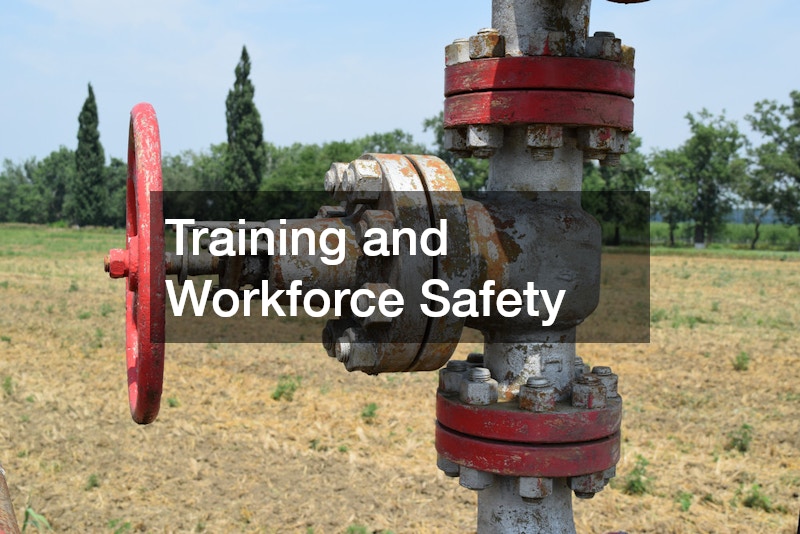Well drilling is a crucial operation in accessing subsurface resources such as water, oil, and gas, serving as a backbone for various industrial activities. The process is instrumental in providing essential resources that drive economic development and support daily life. Understanding the scientific and technical aspects of well drilling is vital for its applications across diverse industries, ensuring that drilling operations are conducted effectively and safely.
How Well Drilling Works
The Basic Principles of Well Drilling
Well drilling fundamentally involves penetrating the earth’s surface to access subsurface resources, utilizing principles of engineering and geology. This complex process requires an understanding of geological formations to determine the best drilling approach and design. By applying scientific methods, drillers are able to efficiently and safely reach targeted resources, minimizing the potential for environmental disruption and ensuring operational efficiency.
The principle of rotary drilling is commonly employed, where a rotating drill bit cuts through rock layers, supported by various drilling fluids to cool the bit and carry cuttings to the surface. The process can vary significantly depending on the geological conditions, resource type, and depth of the target deposit. Parameters such as drilling speed, pressure, and bit selection are carefully optimized for each specific project to maximize effectiveness.
The Equipment and Technology Used
The well drilling industry employs a wide range of equipment, from traditional rotary rigs to advanced technology such as directional drilling tools and real-time monitoring systems. Innovations in drilling technology have enabled more precise and efficient operations, allowing access to previously unreachable resources. These advancements include improved drill bits, automated rigs, and sophisticated data analytics systems that provide real-time insights into drilling conditions.
Modern drilling equipment leverages automation and digital technology, enhancing safety and operational efficiency while reducing human intervention. Such technologies enable precise targeting of resource deposits, minimizing environmental disruption and maximizing extraction efficiency. Advanced sensors and control systems allow operators to monitor and adjust drilling parameters in real-time, adapting to subsurface conditions dynamically.
Environmental Impacts of Well Drilling
Potential Environmental Hazards
Well drilling presents various environmental challenges, including the risk of groundwater contamination, air pollution, and habitat destruction. The extraction processes can cause contamination of groundwater resources if chemicals used in drilling fluids seep into underground water supplies. Additionally, the release of volatile organic compounds (VOCs) and other emissions from drilling operations contributes to air pollution and impacts atmospheric quality.
Surface disturbances and the infrastructure needed for drilling often lead to habitat fragmentation and damage to local ecosystems. The construction of roads, pipelines, and rigs can disrupt wildlife patterns, leading to long-term ecological consequences. Furthermore, improper waste management during drilling operations can result in the accumulation of toxic byproducts, adversely affecting soil and water quality.
Mitigation and Sustainability Practices
Efforts to mitigate environmental impacts involve adopting sustainable drilling practices and technologies designed to reduce ecological footprints. Sustainable management strategies, such as reusing drilling fluid and implementing closed-loop systems, help minimize waste and pollution. The industry also invests in environmentally friendly technologies like electric rigs and reduced-emission equipment to lessen their environmental impact.
Environmental monitoring and regulatory compliance are critical components of sustainable drilling operations, ensuring adherence to environmental protection standards and reducing adverse effects. Companies often undertake comprehensive environmental impact assessments (EIAs) before commencing drilling to anticipate and mitigate potential consequences. Furthermore, initiatives like habitat restoration and reforestation can help offset disruptions caused by drilling activities.
Safety During Well Drilling
Standard Safety Protocols
Safety in well drilling is paramount, with strict protocols established to protect workers, equipment, and the environment. Comprehensive risk assessments identify potential hazards, guiding the development of emergency response and prevention strategies. Routine inspections and maintenance of equipment ensure operational reliability and reduce the likelihood of accidents.
Regulatory compliance with industry standards and legal requirements forms the backbone of safety practices, promoting uniform safety measures across operations. The implementation of protocols such as blowout preventers and pressure control systems is crucial in managing unexpected pressure surges. Furthermore, technological advancements like automated monitoring systems help detect anomalies early, allowing for rapid corrective action.
Training and Workforce Safety
Effective workforce training is essential to maintaining safety in well drilling, equipping employees with the necessary skills and knowledge to identify and manage risks. Training programs encompass a wide range of topics, including equipment operation, emergency response, and hazard recognition. Continuous education and certification programs ensure that personnel are up-to-date with industry best practices and standards.
Leadership involvement plays a crucial role in instilling a safety-first mindset within drilling teams, promoting accountability and vigilance. Safety committees and workforce involvement in safety planning initiatives further reinforce commitment to a secure working environment. By creating a culture of safety awareness, companies empower workers to act proactively in safeguarding themselves and their coworkers.
To encapsulate, understanding the science behind well drilling is pivotal for aligning the operation with safety, environmental, and efficiency goals. A well-informed approach not only ensures the effective extraction of resources but also mitigates risks associated with environmental impact and operational hazards. As technology evolves, so too must the practices in well drilling, striving for a balance between the exploitation of natural resources and the preservation of environmental integrity.



